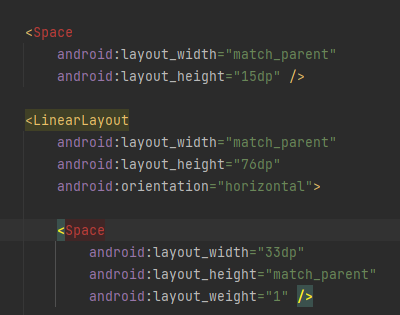I'm getting user reports from my app in the market, delivering the following exception:
java.lang.IllegalStateException: Can not perform this action after onSaveInstanceState
at android.app.FragmentManagerImpl.checkStateLoss(FragmentManager.java:1109)
at android.app.FragmentManagerImpl.popBackStackImmediate(FragmentManager.java:399)
at android.app.Activity.onBackPressed(Activity.java:2066)
at android.app.Activity.onKeyUp(Activity.java:2044)
at android.view.KeyEvent.dispatch(KeyEvent.java:2529)
at android.app.Activity.dispatchKeyEvent(Activity.java:2274)
at com.android.internal.policy.impl.PhoneWindow$DecorView.dispatchKeyEvent(PhoneWindow.java:1803)
at android.view.ViewGroup.dispatchKeyEvent(ViewGroup.java:1112)
at android.view.ViewGroup.dispatchKeyEvent(ViewGroup.java:1112)
at android.view.ViewGroup.dispatchKeyEvent(ViewGroup.java:1112)
at com.android.internal.policy.impl.PhoneWindow$DecorView.superDispatchKeyEvent(PhoneWindow.java:1855)
at com.android.internal.policy.impl.PhoneWindow.superDispatchKeyEvent(PhoneWindow.java:1277)
at android.app.Activity.dispatchKeyEvent(Activity.java:2269)
at com.android.internal.policy.impl.PhoneWindow$DecorView.dispatchKeyEvent(PhoneWindow.java:1803)
at android.view.ViewGroup.dispatchKeyEvent(ViewGroup.java:1112)
at android.view.ViewGroup.dispatchKeyEvent(ViewGroup.java:1112)
at android.view.ViewGroup.dispatchKeyEvent(ViewGroup.java:1112)
at android.view.ViewGroup.dispatchKeyEvent(ViewGroup.java:1112)
at android.widget.TabHost.dispatchKeyEvent(TabHost.java:297)
at android.view.ViewGroup.dispatchKeyEvent(ViewGroup.java:1112)
at android.view.ViewGroup.dispatchKeyEvent(ViewGroup.java:1112)
at android.view.ViewGroup.dispatchKeyEvent(ViewGroup.java:1112)
at com.android.internal.policy.impl.PhoneWindow$DecorView.superDispatchKeyEvent(PhoneWindow.java:1855)
at com.android.internal.policy.impl.PhoneWindow.superDispatchKeyEvent(PhoneWindow.java:1277)
at android.app.Activity.dispatchKeyEvent(Activity.java:2269)
at com.android.internal.policy.impl.PhoneWindow$DecorView.dispatchKeyEvent(PhoneWindow.java:1803)
at android.view.ViewRoot.deliverKeyEventPostIme(ViewRoot.java:2880)
at android.view.ViewRoot.handleFinishedEvent(ViewRoot.java:2853)
at android.view.ViewRoot.handleMessage(ViewRoot.java:2028)
at android.os.Handler.dispatchMessage(Handler.java:99)
at android.os.Looper.loop(Looper.java:132)
at android.app.ActivityThread.main(ActivityThread.java:4028)
at java.lang.reflect.Method.invokeNative(Native Method)
at java.lang.reflect.Method.invoke(Method.java:491)
at com.android.internal.os.ZygoteInit$MethodAndArgsCaller.run(ZygoteInit.java:844)
at com.android.internal.os.ZygoteInit.main(ZygoteInit.java:602)
at dalvik.system.NativeStart.main(Native Method)
Apparently it has something to do with a FragmentManager, which I don't use. The stacktrace doesn't show any of my own classes, so I have no idea where this exception occurs and how to prevent it.
For the record: I have a tabhost, and in each tab there is a ActivityGroup switching between Activities.


FragmentManager, Honeycomb certainly is. Is this happening on real Honeycomb tablets? Or might it be that somebody is running a hacked Honeycomb on a phone or something and it's that hacked edition that is having difficulty? – Pisgah